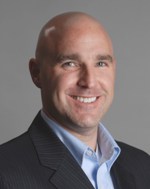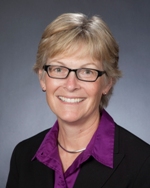
Engaging Clinicians & Other Staff in Improving the Patient Experience
Approximately 70 percent of hospital executives in a recent survey reported that improving the patient experience is one of their organization’s top three priorities. But how well they define that goal, and who is in charge of it, tends to vary.
The survey results were published by The Beryl Institute, an organization focused on improving the patient experience globally, in a new report, The State of Patient Experience, 2013 Findings. The institute defines the patient experience as: “The sum of all interactions, shaped by an organization’s culture, that influence patient perceptions across the continuum of care.”
In the survey, only 3 percent of hospital executives said physicians or other clinicians held primary responsibility and accountability for directing their patient experience; 14 percent reported that chief nursing officers (CNOs) were in charge, and just 1 percent said chief medical officers (CMOs) were.
While it was most common for a committee (26 percent) or a patient experience director (22 percent) to have the primary responsibility for managing an organization’s efforts, when it comes to who is best equipped to improve the patient experience, the answer from healthcare leaders seems to be a resounding, “Everybody!”

Jason Wolf, president of The Beryl Institute, explains that safety, quality and service comprise the patient experience.
“Certainly, clinicians play a central role because they are directly providing care on the frontline,” remarked Jason Wolf, president of The Beryl Institute. “But it isn’t just the physician or the nurse who improves patient experience, it is every person I have an interaction with. It is the person who scheduled me, the person who referred me to that hospital, the housekeeper who keeps the room clean, the cooks who prepare the food, and the valet who treated me like a human when I showed up.”
“When we start to draw straws and say it is the clinician and this person or that person who determine patient experience, we are undermining it,” he continued. “There are certainly debates about whether or not it is necessary for a clinician to be the leader of a patient experience effort, but that is just the person who navigates. Ultimately, everyone is involved and needs to understand that they play a role.”

Donna Smith, MD, says patient experience is about caring for people and people knowing they are cared for and cared about.
“At Virginia Mason we have taken the approach that the whole team is important to the patient experience because everybody has a direct interaction with patients or supports people in direct contact with patients,” said Donna Smith, MD, medical director of clinics at Virginia Mason Medical Center in Seattle, Wash. “Clinicians, however, do set the example for treating patients with respect and giving top quality service.”
Because of the pressures to see a certain number of patients and to follow a myriad of protocols, caregivers can sometimes feel a tension between providing care and being caring. More and more research is showing, however, that being caring is actually integral to providing care.
“Studies are revealing that patient experience measures are influencing quality outcomes as much as quality-specific measures such as checklists,” Wolf noted.
“The better the patient’s experience, the more trust they have for their provider, the better outcomes are.” Smith added. “Providing care and being caring used to be a tension, but now we know they are inseparable. Having a connection with the clinician engages patients in their care and supports them in adhering to their care plan.”
It is not only patients who benefit from patient experience improvements, but also clinicians.
Virginia Mason provides their 475 physicians with feedback regarding patient satisfaction and supports them with both training and individual coaching to help them offer the top quality patient care they want to provide.

Susan Haufe, administrative director of patient relations for Virginia Mason Medical Center, says patient experience must be supported from the executive level.
“In our journey, we have found that when physicians engage and focus on the patient experience, they also quickly experience a change in their own capacity. They go home feeling less exhausted and feeling like they have had meaningful experiences,” said Susan Haufe, administrative director of patient relations for Virginia Mason Medical Center.
For hospitals looking to improve their patient experience scores, Wolf recommends having a formal definition of patient experience. Two examples highlighted in the Beryl Institute report include:
“Courtesy, compassion, and communication must be at the forefront of every interaction”
“To listen, To care, To heal…Together.”
“Buy-in comes from having a comprehensive strategy. One thing that stood out to me from the study was that fewer than half of hospitals have a formal definition of what kind of patient experience they are trying to create. If you don’t know what you are trying to achieve, how do you accomplish it?” Wolf asked.
“You have to have a clear strategy and framework and help people know what their role is in making that happen,” he continued. “Help them understand that the role that they play is part and parcel of the whole goal--that it affects outcomes for patients and families.”
“Improving the patient experience has to have support from the executive level and physicians. The executives need to communicate that it is an important focus and priority. They need to put resources behind it and spend time talking about it,” stated Haufe.
She recommends talking to people about observable behaviors, such as smiling, looking people in the eye and using patients’ preferred names.
“Some people think that if they don’t connect with patients naturally, that they aren’t capable,” Smith added. “But it is really just small changes everyone is capable of that create remarkable results.”
© 2013. AMN Healthcare, Inc. All Rights Reserved.


